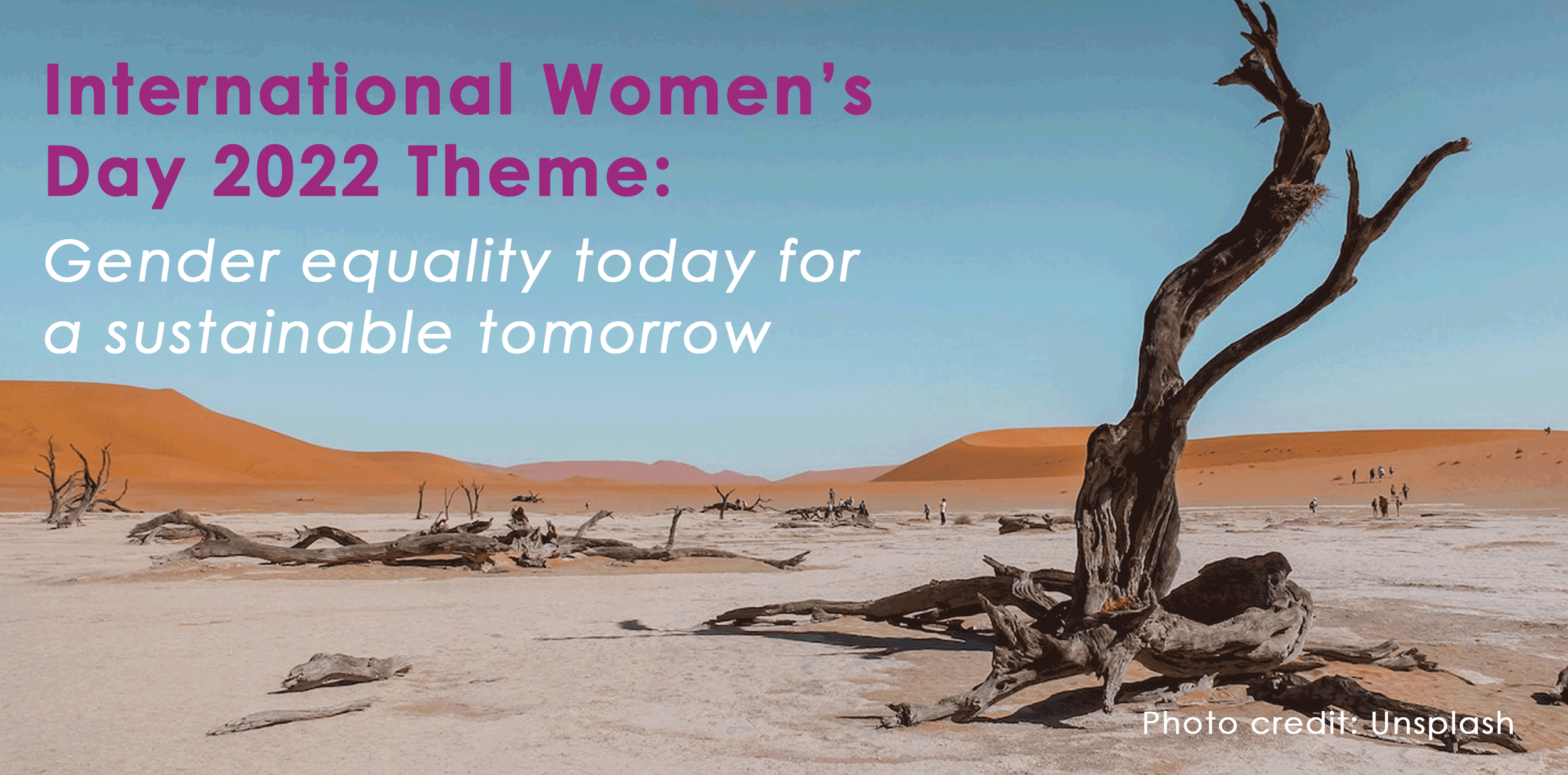
Where Gender Equality and Sustainability Intersect

The UN has declared a theme for International Women’s Day 2022, and it may come as a surprise to some: “Gender equality today for a sustainable tomorrow.”
What exactly is the connection between sustainability and gender equality?
In recent decades researchers have been exploring the climate change narrative from a more nuanced, gendered perspective. They’ve discovered that women are impacted first and worst by climate change.
Climate change has a massive impact on the world’s poor, and since 70% of the world’s poor are women, this makes sustainable development decisively a women’s issue.
Below are some examples of the cross-section between climate change and the status of women and girls in the world.
Climate change takes away hard-won economic status and higher-valued jobs
Arohi, a mother of three in rural Assam (North-eastern India), lost her job in textile production as the rising temperatures and humidity levels have adversely impacted the production of “Muga silk” used by the weavers. Women in her position are often driven to the lowest-paying construction jobs, or otherwise into the informal market because they lack education and skills.
Climate change disproportionately impacts the female caregiver
In the wake of Hurricane Maria, Valeria continues with the household chores, exposing herself to contaminated water and illness. Just like some other poorer Carribeans, her family lives on an unstable deforested hillside.
Climate change directly impacts gender-based violence
Because of the drought in Fiji, Tala has to walk many miles further for water. This increases her exposure to kidnapping and rape, which is prevalent in the area. And in the aftermath of Typhoon Haiyan in the Philippines, 14-year-old Mary Joy is forced into prostitution to feed herself and her destitute family.
These stories demonstrate how unsustainable development and natural disasters associated with climate change wreck female lives. Across the world, these phenomena increase infant mortality, child marriage, trafficking and other forms of gendered violence. Women are also among those most impacted by climate change because they are typically responsible for households’ food and water. In times of scarcity, the women of the family must undertake increasingly risky actions to meet their family’s basic needs.
Because women are so close to the impacts of climate change, it’s vital to include their perspectives in climate-related planning, policy-making, and implementation. But across the globe and even in the developed world, women are underrepresented in policy-making organizations and in STEM-fields related to sustainable energy.
Where women have been able to play a role in responding to climate change, there’s a noticeable improvement in outcomes. According to the United Nations Framework Convention on Climate Change:
Women’s participation at the political level has resulted in greater responsiveness to citizen’s needs, often increasing cooperation across party and ethnic lines and delivering more sustainable peace. At the local level, women’s inclusion at the leadership level has led to improved outcomes of climate related projects and policies. On the contrary, if policies or projects are implemented without women’s meaningful participation it can increase existing inequalities and decrease effectiveness.
The UN has put together a list of goals to tackle the problem of gender equality and sustainability on many fronts. Their 2030 goals recognize symptoms like unpaid caregiving work, domestic power dynamics, rigid societal expectations, lack of education, and lack of access to resources and aim to tackle each.
The good news is that more and more women around the world are leading movements and strategizing solutions to this problem that affects all of our families, communities and finite resources.
About the author: Mallika Sen is an engineer in the Bay area. She loves to read, watch Netflix and plan things – but not simultaneously. She has a lot of “micro-hobbies”, which is a term she’s made up to describe her habit of intensely researching or practicing a new topic or activity for a few months or more at a time before moving on to the next. She believes this adds perspective and excitement to life and would love to share what she learns along the way.
